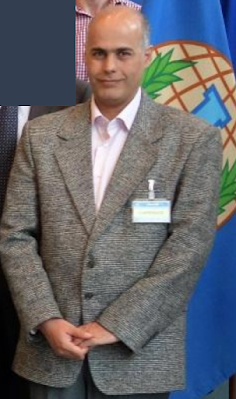My Babri Just Doesn't Care For Me
It seems we struck a nerve with our last article on Dr Mehran Babri (مهران ببری, ID: 0050111078), the man leading SPND’s research into chemical weapons. That’s not surprising – Babri’s work on fourth generation chemical agents – including the notorious Novichok variants used by Russia in assassination attempts – is pretty outrageous, and we can barely believe that nobody had outed it already.
One thing that we didn’t cover in that article is Babri’s deep connections across Iranian academia, and the inherent risks that those connections pose to otherwise innocent academics and research institutions. Let’s dive in!
Publish or perish
Like many of his SPND colleagues, Mehran Babri collaborates on scientific research with Iranian universities outside the SPND bubble. That’s not something that you might expect, given these guys work in an otherwise top-secret environment. But published research is the yardstick by which scientists judge their success; and it’s hard for SPND scientists to lengthen their yardstick unless they make connections outside their usual classified hunting grounds.
The problem is, SPND has a nasty habit of entering into research relationships with universities and researchers who don’t quite understand what they’re getting into. Doing due diligence on research partners is generally not a forte of academics in science and engineering; they’re much more interested in solving hard problems than checking whether their co-author has a covert side-gig working on weapons of mass destruction.
Babri’s web
Mehran Babri is a case in point. We’ve done a survey of the universities that Babri has collaborated with, based on his academic publications, and it’s a long list. Here we go:
- Al-Zahra University. Research on
toxins;
- Islamic Azad University, Tehran branch. Research on mustard gas; chemical weapon precursors; chemical weapon simulants;
- Materials & Energy Research Center. Research on mustard gas;
- Payam-e Noor University. Involved in same research as Islamic Azad University above; also sarin analogues;
- Semnan University. Research on chemical weapon precursors;
- University of Esfahan. Research on VX nerve agents; chemical weapon precursors;
- University of Guilan, in Rasht. Research on identification of Novichoks;
We hope that the researchers involved in these projects didn’t fall for Babri’s presumed justification that this work was defensive or humanitarian in nature. We’d recommend that anyone who has been spun that story review our earlier article on Babri.
What’s at stake
It’s worth outlining exactly the risks that face academics who collaborate with SPND scientists like Mehran Babri. We can think of several:
- The risk of doing work that underpins the development of weapons of mass destruction. Babri’s mass spectrometry work exemplifies this – he used exactly this knowledge and technology in his work on next-generation CW agents. Seems a no-brainer, but we’d think most people would want to avoid that.
- The risk of being designated under US or EU sanctions for facilitating the work of SPND, and Iran’s WMD-related R&D efforts. Like the bumper sticker says, It Could Happen To You – both as an individual, and as an institution;
- The risk of being denied research opportunities or careers abroad. Several countries (including all of those where the world’s best universities are located) conduct screening of postgraduate or professorial entrants from Iran to check whether they have been involved in past work or research related to military development, WMD-related work, or human rights abuses. Your academic publication record will be checked as part of this process – and an SPND co-author will be a definite red flag. Say goodbye to that cushy postdoc role or sabbatical!
- The risk of being associated with corruption and other criminal acts. We’ve found endless examples of corrupt behavior on the part of SPND officials, all of which present liability to the committers under Iranian law, and the laws of several other countries. Getting into bed with SPND is a sure-fire way to be exposed to that.
- Credibility. Working with a group better known for pseudo-science, dodgy dealings, ludicrous projects, and laughable security practices, is about the worst thing one can do for one’s career and reputation.
Friends don’t let friends work with SPND
The evidence is there for you to judge yourself, but our advice is to avoid Mehran Babri as you should all individuals associated with SPND. As a general rule, we’d avoid shaking hands with anyone who has previously handled a fourth-generation nerve agent, metaphorically as well as literally…









Comments
Post a Comment